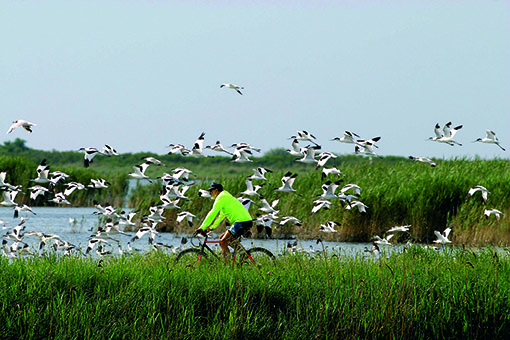The Slow Movement advocates a cultural shift toward slowing down life’s pace. It began with Carlo Petrini’s protest against the opening of a McDonald’s restaurant in Piazza di Spagna, Rome in 1986 that sparked the creation of the Slow Food organization. Over time, this developed into a subculture in other areas, such as Slow Cities, Slow living, Slow Design, and now Slow Travel, according to slowmovement.com.
One of the defining elements of slow travel is the opportunity to become part of local life and to connect to a place and its people. Slow travel is also about connection to culture.
Gone are the hectic holiday tours where you flit from one ‘must see’ to another, and arrive home feeling like you need a holiday.
Local Happenings
Joining in local happenings slow travelers stay in one place for at least a week. They usually choose holiday rentals ie houses, cottages, apartments, and villas that are a ‘home away from home’ – you shop and cook just as you would at home.
Holiday rentals are often called by different names in different countries eg in the UK and Australia they are called ‘self-catering’; in France, ‘gites’; in Italy ‘agriturismos’’; in Switzerland and Germany ‘ferienwohnungen’; and in North America ‘vacation rentals.’
Holiday rentals are fully equipped for the slow traveler to just move in and start living. They come with sheets, towels, crockery and cutlery etc. Some are stocked with food but it is better if they aren’t. People have different tastes and may not like the food that is supplied. But more importantly, if the larder is not stocked the slow traveler has to go out to shop. This is an important part of ‘living’ in your travel destination.
By living as opposed to ‘staying’ at your destination, you can experience the place more intensely. Not only do you have the opportunity to shop for your groceries, you see people in your community or village every day. You can go for a run each morning and stop at the same café for a coffee – meet the locals.
Not Only Urban
Slow travel is not restricted to urban settings. Many slow travel operators offer self-catering accommodation in rural areas sometimes on fully function farms.
One of the pleasures of slow travel is the slow and thorough exploration of the local area – it is like an immersion process. Most slow travelers start by exploring everything within a couple of hundred meters of where they are living. This can easily be done on foot and is the area that is given most time and attention. Next they explore out to a few kilometers – this can easily be done on a bike. If there is time slow travelers then explore further afield, perhaps by train or hire car.
This slow exploration is in direct contrast to conventional travel that seeks to ‘hit’ the major tourist features in a 20 km radius. Slow travelers are freed from these tedious pressures of standard tourism. By exploring on foot and by bike they enjoy traditional ways of doing things which provide opportunities to talk to people and find out the points of interest from their perspective.
If there is time, you can become involved in local activities: take a language or cooking course, volunteer for a local organization or group, volunteer at a local school to teach English or another language, or try woofing (willing workers on organic farms).
You could design your slow travel around working to support the disadvantaged. Check out what you could do to help in a developing country such as India or Vietnam. Use your skills to help others. In the process you will get to know another culture and its people. You will be working and living at the local level and so will develop relationships with local traders and local people. A new word has been coined to describe this kind of slow travel – voluntourism.


